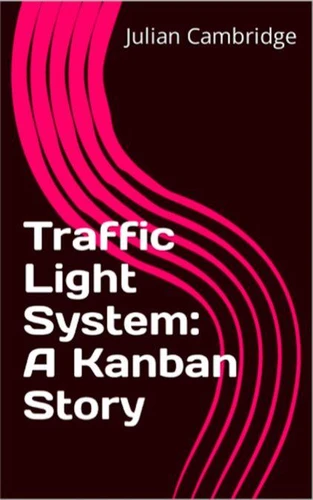Traffic Light System: A Kanban Story. A Kanban Story
Par :Formats :
Disponible dans votre compte client Decitre ou Furet du Nord dès validation de votre commande. Le format ePub est :
- Compatible avec une lecture sur My Vivlio (smartphone, tablette, ordinateur)
- Compatible avec une lecture sur liseuses Vivlio
- Pour les liseuses autres que Vivlio, vous devez utiliser le logiciel Adobe Digital Edition. Non compatible avec la lecture sur les liseuses Kindle, Remarkable et Sony
 , qui est-ce ?
, qui est-ce ?Notre partenaire de plateforme de lecture numérique où vous retrouverez l'ensemble de vos ebooks gratuitement
Pour en savoir plus sur nos ebooks, consultez notre aide en ligne ici
- FormatePub
- ISBN8223328025
- EAN9798223328025
- Date de parution08/11/2023
- Protection num.pas de protection
- Infos supplémentairesepub
- ÉditeurDraft2Digital
Résumé
The traffic light system and the concept of Kanban share several similarities. Both systems rely on visual signals to communicate information, whether it is the status of work items in Kanban or the instructions for drivers and pedestrians in the traffic light system. They also limit the amount of work in progress, whether it is restricting the number of work items in Kanban or controlling the flow of vehicles at intersections through traffic lights. Both systems utilise feedback loops to continuously improve performance, whether it is through regular check-ins in Kanban or the adaptive response of traffic lights to changing traffic conditions.
Additionally, both systems aim to improve efficiency by reducing waste and optimising flow.
Additionally, both systems aim to improve efficiency by reducing waste and optimising flow.
The traffic light system and the concept of Kanban share several similarities. Both systems rely on visual signals to communicate information, whether it is the status of work items in Kanban or the instructions for drivers and pedestrians in the traffic light system. They also limit the amount of work in progress, whether it is restricting the number of work items in Kanban or controlling the flow of vehicles at intersections through traffic lights. Both systems utilise feedback loops to continuously improve performance, whether it is through regular check-ins in Kanban or the adaptive response of traffic lights to changing traffic conditions.
Additionally, both systems aim to improve efficiency by reducing waste and optimising flow.
Additionally, both systems aim to improve efficiency by reducing waste and optimising flow.






















